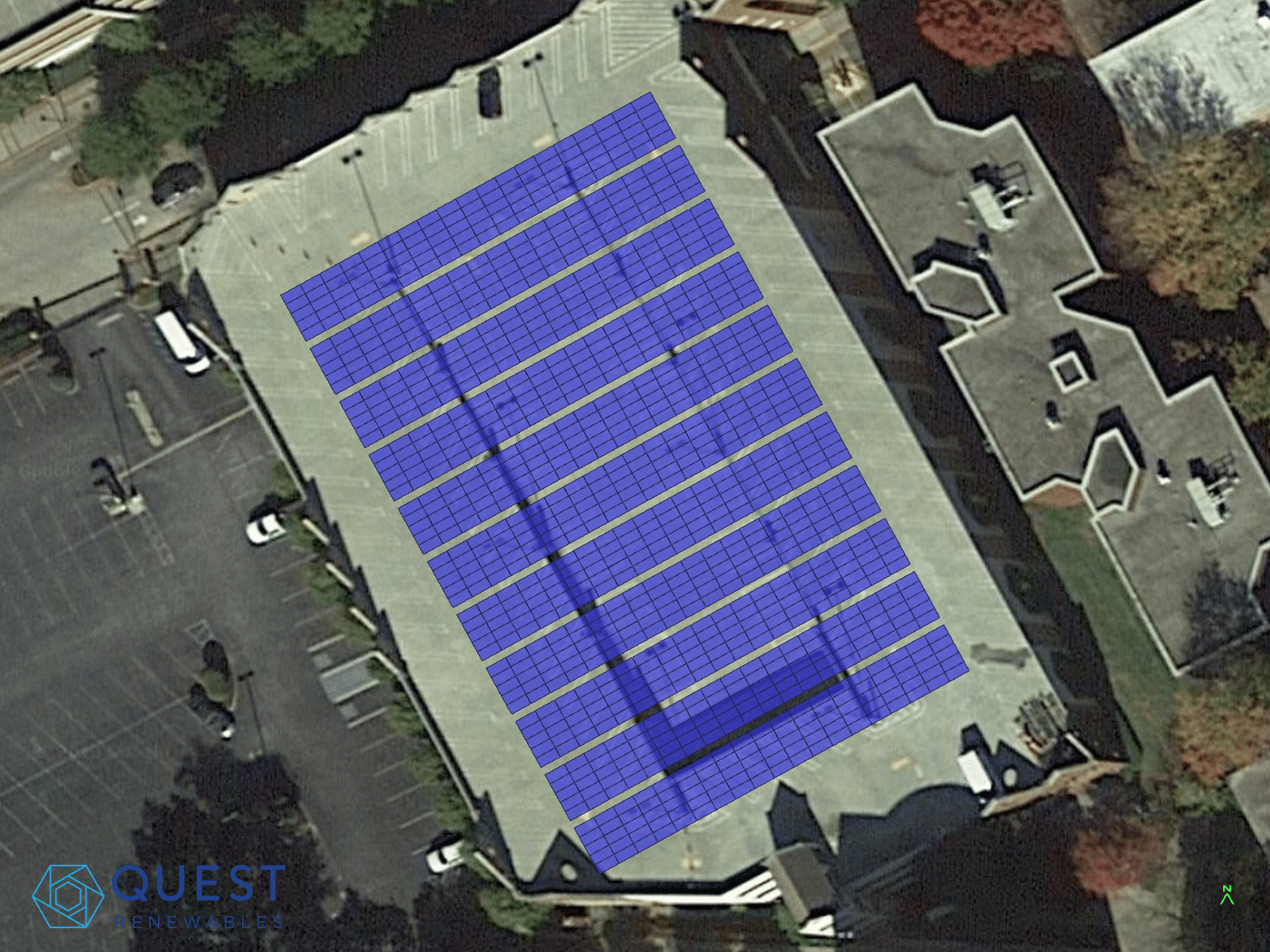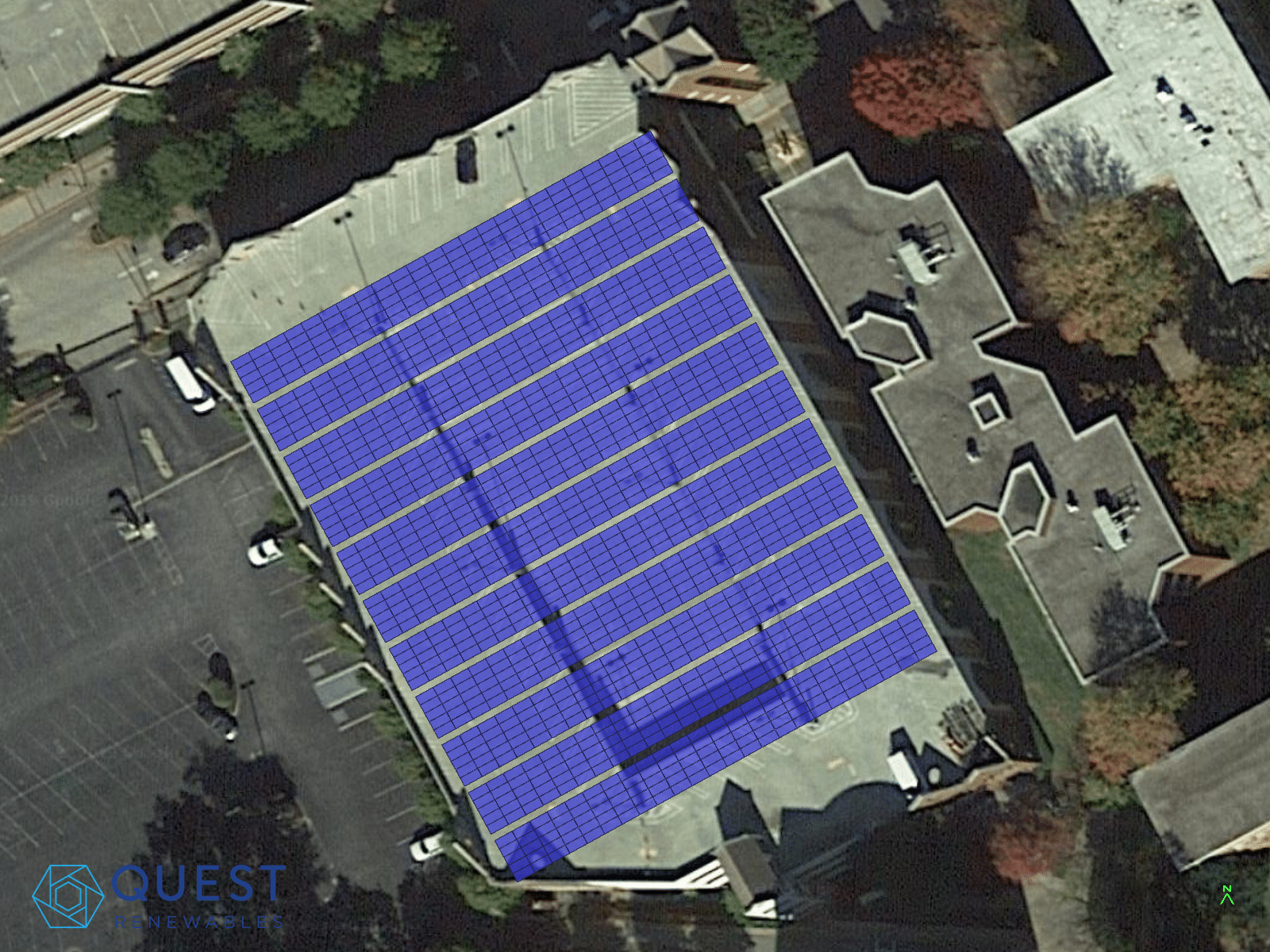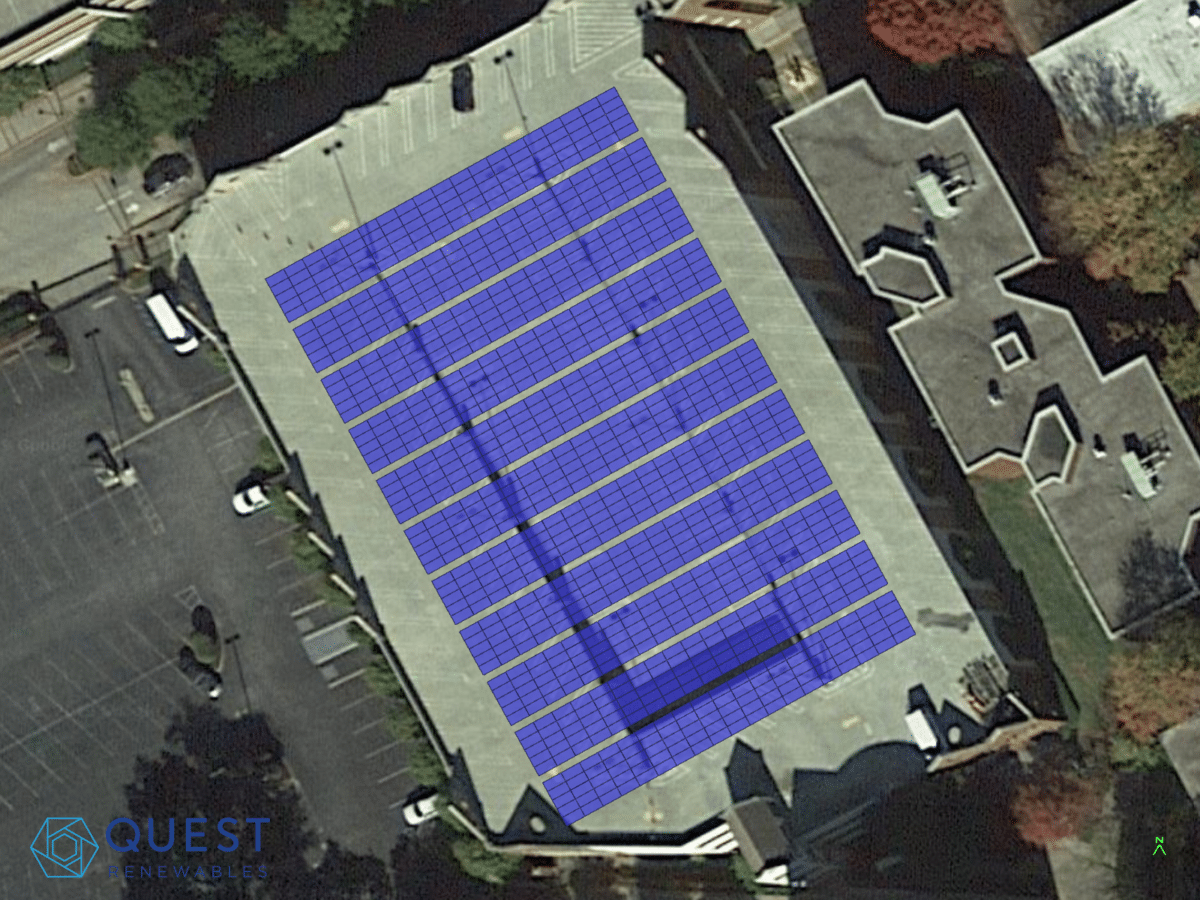by Will Arnold
In urban areas, population and development density reduce the available real estate for rooftop solar. As distributed generation increases in value, the solar market is increasingly looking at parking lots and parking garages as viable sites for solar deployment. However, as real estate developers in major cities note, a parking lot is a multi-story building waiting to be developed, and many lot owners don’t want to tie up their properties for a 10-20 year term. As garages are a more valuable long term asset than parking lots, they better match the typical finance timeline for solar canopies. Surprising to many, parking garage solar canopies can be similarly priced or sometimes less expensive than surface lot carports under the right conditions.
Why are parking garages good candidates for solar?
- Garages are less likely to be redeveloped than surface lots, particularly in urban areas.
- Garages are often the best place for solar when co-located with office buildings with rooftops that can be small, have low load capacity, or are cluttered with HVAC.
- Solar on parking garages can enable micro grid for critical facility resiliency at hospital campuses and large government facilities.
- Solar on parking garages can reduce the capital cost of level 2 EV charging and provide renewable power to the chargers.
- Commercial buildings need parking density to meet city planning requirements of parking spaces per square footage.
- Solar atop newly constructed garages can be part of an overall LEED certification strategy or facilitate city approvals.
3 Main Structural Cost Drivers for Solar Garages
While solar on parking garages sounds good everywhere, customers and EPCs benefit from having a fast screening tool to see if a solar canopy makes sense atop a particular garage. Given our experience with long span solar carports, there are three key factors that drive the cost of projects and thus the viability of these solar projects.
Cost Driver # 1 – Structural type of parking garage:
The four most common types of garages are: Steel Framed / I-Beam (hyperlink), Cast in Place (hyperlink), Pre-Cast (hyperlink), and Cast in Place Post-Tension (hyperlink).
At Quest we use a simple chart to score the structural viability of solar by type of garage.

Key: green = highly viable, yellow = potentially viable, red = use extreme caution
Global Capacity – This is the ability of the garage to take the weight of the overall system. Typically, the pound per square foot of the canopy is relatively small relative to the dead load of the garage itself plus the weight of cars at full capacity.
Connection Capacity – This is the most typical point of failure, requiring reinforcement or clever typology strategies. Necessary reinforcement can be as minor as welding small gussets to an I-Beam or can require pouring new concrete to enlarge an existing column.
Ease of Connection – It is easiest to physically interface with Steel Frame garage structures, as you know the location / typology of the columns without further exploration since the vertical columns above the decks are exposed I-Beams. For any concrete structure, even if you have good architectural plans, rebar scans are required to confirm your interface, adding uncertainty and variability. Further, at times these concrete columns are very crowded with rebar, sometimes driving cost due to the difficulty of the interface.
Live Load Capacity – The live load capacity will determine what size equipment you can use on the garage. Carport installs are necessarily easier with bigger telehandlers and articulating boom lifts. At times, this constraint can hinder construction methodology.
As you can see from the chart above, I-beam garages (not uncommon in the NE), are almost always the best option.
Cost Driver # 2 – Configuration:
With all solar canopies, one of the major project cost drivers is the kW per garage connection / foundation. This fact holds true for carports, as there is more steel in vertical risers, and more steel and labor in the connections. We have found that the following configuration is best with our system, where our truss size can be 95 panels:

This 95 panel truss gets 47.5 panels per connection to the parking garage, vs 30 panels per garage connection when you go full coverage edge to edge below with 120 panels per truss.

This design is problematic as the edge condition of a garage creates turbulence, and requires conservatism in both modeling and the solution that is executed.
This is another common two lane layout where you only get 26 ⅔ panels per deck connection with an 80 panel truss:

Notice that having a “3 lane” garage is most cost effective.
You also need to interface with the structure and its column layout. Given how garages are laid out with parking spaces and drive aisles, a 60’ span structure is nearly always the best option to maximize both project size and panels per foundation.
Cost Driver # 3 – Mobilization and access:
As with a rooftop project, you will need to get all the material to the top of the garage. However, with a garage, you need a lot more material that needs to be mobilized onto a structure that has both height restrictions for vehicles and live load restrictions on gross vehicle weight.
Therefore, it is always best to use a crane for mobilization. Crane size / costs depends upon the weight of the load on the hook and the radius of the pick… ie how far the crane needs to reach to place a particular weight. In a perfect world, the garage owner would have an open parking lot directly adjacent to the garage with clear access to a low (4 stories or less) garage. That is often not the case. When siting the crane, one also needs to be aware of how / if the means of egress for the garage is impacted, as well as the pedestrian walkways. At all times, at least one means of egress into the garage needs to remain open.
At Quest Renewables, we work to address all of these constraints with our QuadPod long span product, as well as proprietary solutions we have developed for all of these parking garage types. When all factors align, we can see projects that are comparable in price to surface lots, or are only a small premium. As you look at projects in major cities, especially current hot markets like DC and Boston, we are always happy to help qualify the highest value jobs quickly, educating you on how to identify garage type, projects with best configurations, as well as crane access. As projects in urban areas are increasingly important for grid stability, parking garage solar will continue to increase in value.
Will Arnold is a co-Founder and SVP, Sales and Products at Quest Renewables
This content is protected by copyright and may not be reused. If you want to cooperate with us and would like to reuse some of our content, please contact: editors@pv-magazine.com.








wow very interesting for intro thank you.